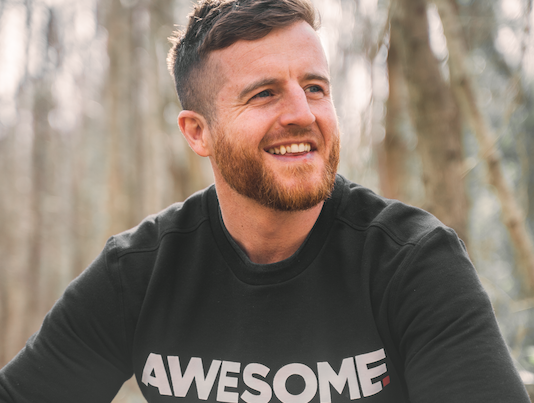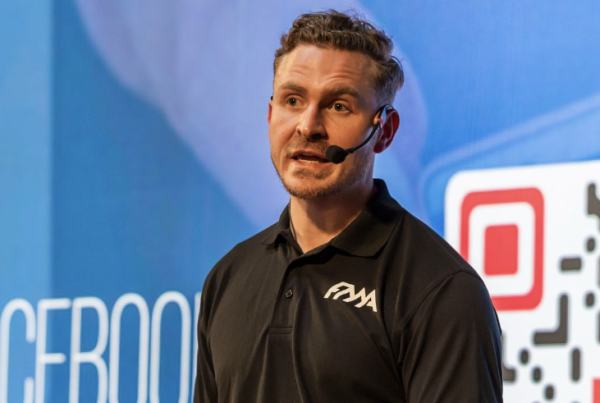What style of training courses are proving most popular? We spoke to the managing director of training provider Health and Fitness Education (HFE) to find out what he thinks the current demand is.
FitPro: How do you ensure that instructors transitioning from pre-choreography to freestyle teaching have the right skills in order for them to create their own choreography?
Lee Cain: We’re advocates of both freestyle and pre-choreographed group exercise formats and we actively promote both in our delivery. However, our Level 2 Exercise to Music courses are entirely freestyle in so far as our students are taught how to be creative with their choreography, how to make classes their own, and how to use the choreography to create a fun and lively experience for participants. In this area, we also commissioned the veteran group exercise presenter, Kardy Laguda, to create some freestyle choreography workshops to help our students tap into their creativity. These resources have been really popular and successful, and our students can watch these videos at appropriate stages in their course to help them plan and prepare authentic and creative choreography.
FP: What do you think are the key tools/skills an instructor needs to keep class participants coming back for more?
LC: First and foremost, classes need to be fun. If participants don’t enjoy the class then it’s unlikely they will keep coming back. Regularly changing choreography, uplifting and varied music, and a good sense of humour are certainly elements that contribute positively to the fun factor. Group exercise participants are driven more by social motives than they are by a burning desire to shed calories. Classes therefore also need to be interactive.
Above all else, instructors need to be authentic. All too often an instructor will see an Australian or American presenter at a workshop or on a video and try to emulate them. This just isn’t authentic and in more cases than not it only serves to make participants cringe.
FP: What tends to be the most popular style of training course for people new to the industry? Are you able to offer any explanations on what has driven this pattern?
LC: Level 2 Fitness Instructor qualifications (gym instructor, exercise to music, aqua and circuit training) are the entry-level qualifications for those joining the industry. Gym-based training and exercise to music are without doubt the most popular of these qualifications and it seems to us this is simply because there are so many different places that you can work with these qualifications. Water-based exercise and circuit training aren’t anywhere near as popular as they used to be now that the studio offering of most health clubs is so diverse.
FP: How often should instructors attend physical workshops to increase their knowledge- based skills?
LC: The educator in me would say people should attend ongoing professional development programmes as regularly as they can afford to, from both a time and cost perspective, and at least annually. However, over the past 15 years or so, the world has completely changed and people literally have at their fingertips new information, research, data and media. The model whereby we mandate to instructors that they should attend so many workshops in a year is completely out of date and I personally think if we persist along these lines then we’re likely to suffer the same fate as many other industries.
I think that students want to engage with their education and professional development in smaller and more frequent bouts, much the same way they access other forms of media. This is one of the reasons we developed a mobile app that would enable our learners to take their course with them on their smartphone wherever they are. So, whatever rules are put in place by industry regulators, employers and professional bodies, I think the content has to be sufficiently accessible and flexible to allow the audience to dip in and out as they need to. Of course, there is no substitute for face-to-face training, especially when it comes to practical training, but we do need to find a balance.
FP: Why is the fitness industry such an exciting place to work?
LC: In a word … diversity. There are so many different roles in this sector and there is so much flexibility around those roles. In group exercise, instructors often work on a freelance basis for a variety of different clubs and in numerous locations. A common reason people change their career is boredom, but it’s hard to get bored in the fitness industry.
There are also lots of people working in and joining the fitness industry on a part-time basis. To quote them, they have a ‘proper job’ in the day and then at weekends or in the evenings they get paid to do what they love. How many industries work like this? It sounds like a bit of a cliché but, in the fitness industry, no two days are the same and no two clients are the same.
FP: What insider tips would you give on how to succeed within the industry?
LC: You have to have a genuine love of people because, above all else, the fitness industry is about working with people. It doesn’t matter what technology you have, how good you look or what you can do physically, if you can’t communicate with and relate to people on their level, you don’t stand a chance of making it in the fitness profession.
Next, you need to find an area of the business that you’re really passionate about, and master it. Too many people think that because they have a qualification, they instantly become experts in the eyes of others. It takes a colossal amount of energy at the start of the journey but it is here where most exercise professionals learn lessons that just can’t be taught or assessed on a training course. It’s not uncommon for new instructors to undertake voluntary work once they’ve completed their qualification to get this invaluable experience.
FP: Can you tell us some more about the demographics of those taking on the training courses? How many on average are tapping into the special populations training?
LC: The fitness industry is an amazing sector comprising people of all ages, backgrounds and skill sets. I think many people from outside the sector, especially those who don’t use a gym, view it as a young person’s industry, but it really isn’t the case. We have students on courses in all shapes, sizes and ages. The oldest person we had on a course was 74 and it really isn’t uncommon to have people over 60 working towards a fitness instructor qualification. Life expectancy is at an all-time high and most people now realise if they want to remain independent in their twilight years, they need to remain active. Who better to work with older adults than older instructors?
While we can’t speak for other providers, we certainly find that personal training certainly seems to attract ‘younger’ people, whereas the group exercise courses have a much more mature learner base. As you might expect, there tends to be a fairly even ratio of men and women aspiring to become a personal trainer, but the group exercise programmes are certainly dominated by females.
About the author
Lee Cain is the managing director and founder of Health and Fitness Education (HFE), a leading national independent training provider to the active leisure sector. He has more than 20 years’ experience in the fitness industry and has worked as a group exercise instructor, personal trainer, and strength and conditioning coach. He also has extensive experience lecturing for other training providers and in both the further/higher education sectors.
For more information on HFE’s offerings, visit: https://www.hfe.co.uk/







